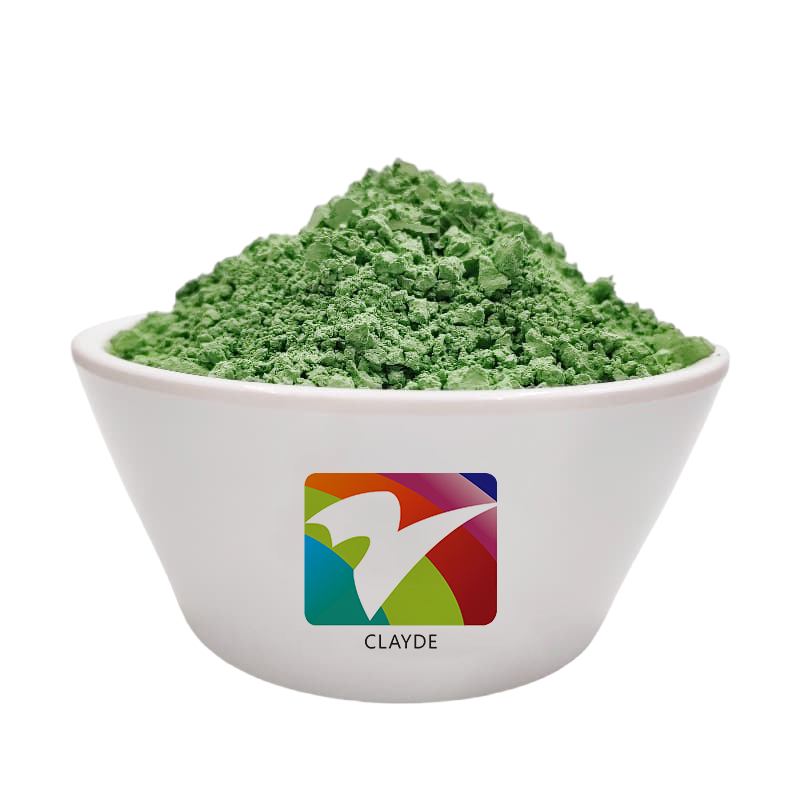Green (Inclusion Pigment) is a high-performance ceramic pigment designed to deliver brilliant, durable green coloration in glazes and enamel coatings. It is synthesized by encapsulating coloring oxides such as chromium and cobalt within a stable crystal matrix like zircon, forming a non-reactive pigment ideal for high-temperature ceramic applications. This encapsulation technology prevents unwanted reactions during firing and ensures vibrant color retention.
Green inclusion pigments are produced by incorporating chromium oxide (Cr₂O₃) and cobalt oxide (CoO) into a zirconium silicate (ZrSiO₄) structure. These ions are physically trapped within the crystal lattice, preventing interaction with surrounding glazes or firing environments. This unique inclusion structure provides excellent thermal stability and chemical resistance.
Green inclusion pigments are valued for their brightness, stability, and compatibility with various glaze formulations. They are widely used in:
Green (Inclusion Pigment) offers a specialized solution for ceramic and glass industries seeking environmentally safe, thermally stable, and visually striking green pigments. Its encapsulated structure ensures consistent performance across a wide range of firing environments, making it an indispensable pigment for modern ceramics and decorative arts.
